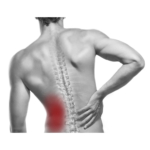Cervical disc herniation
It is a lesion of the intervertebral disc with migration of the nucleus pulposus affecting one or more nerve roots of the brachial plexus that in the acute phase can generate particularly intense symptoms in the neck region with irradiation to the arm and hand.
Less frequent than hernias in the lumbar tract, they are prevalent in the population group between 35 and 50 years of age and mostly affect the female gender.
Symptoms in the arm often represent the most intense pain with numbness and a tingling sensation in the hand that can complain of a reduction in grip, it should be noted however that a pain radiating to the arm is not sufficient to diagnose the presence of a cervical hernia.
Confirmation of the diagnosis occurs with the first visit.


